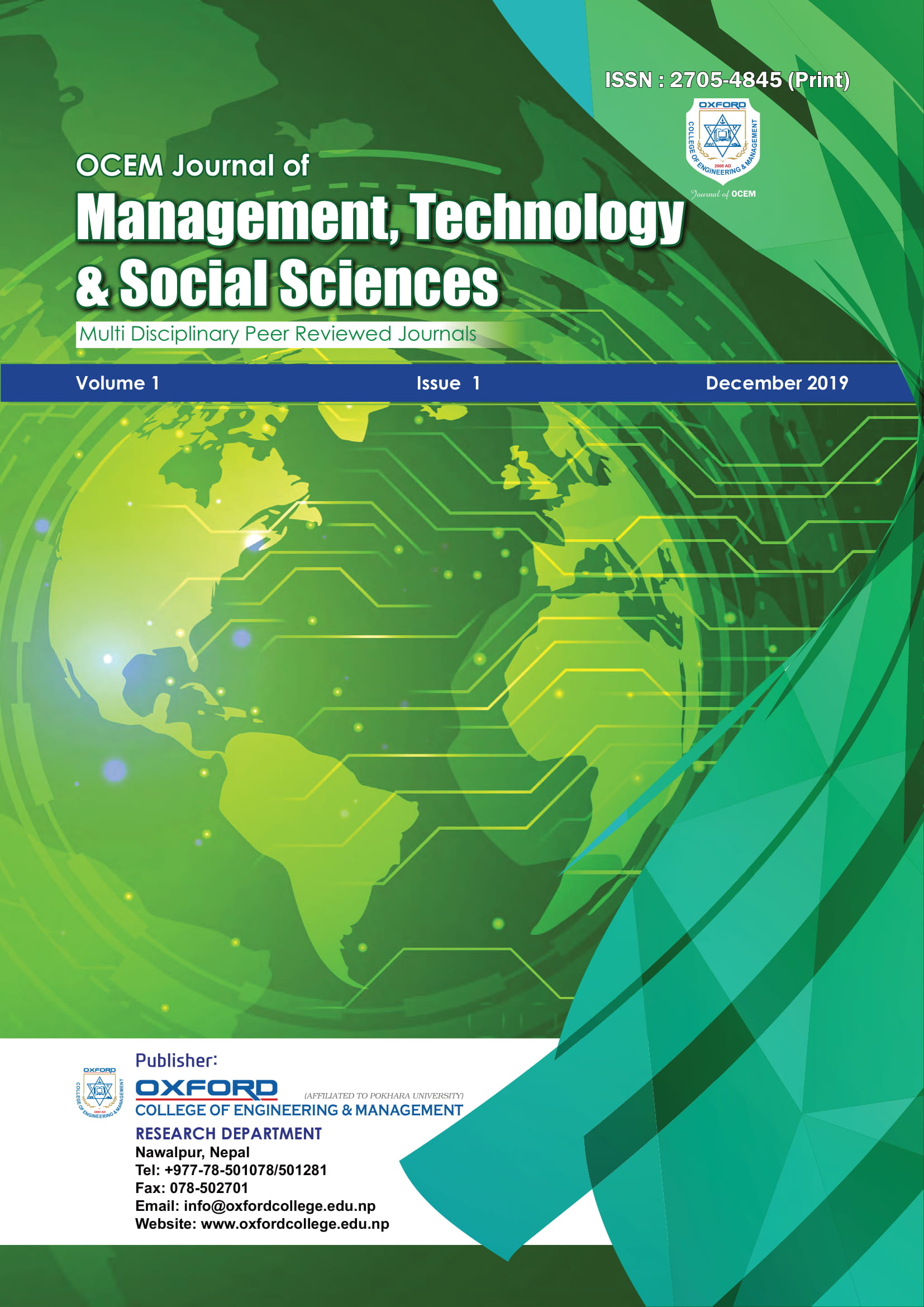The study of internet addiction among adolescent of Oxford College of Engineering and Management (OCEM)
Abstract
The primary objective of this study was to determine the prevalence of internet addiction (IA) among contributory factors and to determine the association between socio-demographic variables and influencing factors of using internet among Oxford College of Engineering and Management (OCEM) students. The quantitative approach along with the survey study was used as a research method and the survey questionnaire was used as the research instrument. Participants were selected through simple random sampling. The cross sectional analytical study was conducted among 169 adolescents of OCEM students. The results show that prevalence rate of non-addictive internet users were 20.1% while 79.9% were addictive users. Among addictive users, 38.5% were found mild addiction, 40.8% were found moderate addiction, only 0.6% were found in severe addiction. The results also shows that the prevalence of internet addiction was significantly high among young generation. Internet addiction was also statistically significant with various demographic variables and internet use factors. The previous studies reveal that internet has become an integral part of contemporary life, bringing huge benefits in terms of expanding access to knowledge, information, social interaction, and entertainment and further noted that around 40% of the today’s world population has an internet access. The implications of this study will be beneficial to parents, educational leaders, school and college principals to understand the internet addiction problems and to formulate new academic policy to minimize the over use of internet during teaching and learning activities. It is also recommended that internet addiction can affect the physical and mental health of the students so that the problem of internet addiction should be prevented through it’s awareness program on the negative effects of over use of internet.
Keywords:
Prevalence; Internet addiction; Inter addiction; youth of OCEMDownloads
References
Adhikari B, M. (2015). Internet Addiction and Associated Factors among Health Sciences Students in Nepal. Journal Of Community Medicine & Health Education, 05(04). doi: 10.4172/2161- 0711.1000362
Bozkurt, H., Özer, S., Şahin, S., & Sönmezgöz, E. (2017). Internet use patterns and IAin children and adolescents with obesity. Pediatric Obesity, 13(5), 301-306.
Christakis, D.A., Moreno, M.M., Jelenchick, L., Myaing, M.T. & Zhou, C., (2011). Problematic internet usage in US college students: a pilot study. BMC medicine, 9 (1), l.
Cohen, L., Manion, L., Morrison, K., & Bell, R. (2011). Research methods in education (1st ed.). London: Routledge.
Hawi, N. (2012). Internet Addiction among adolescents in Lebanon. Computers in Human Behavior, 28
(3), 1044-1053.
Heo, J., Oh, J., Subramanian, S., Kim, Y., & Kawachi, I. (2014). Addictive Internet Use among Korean Adolescents: A National Survey. Plos ONE, 9(2), e87819. doi: 10.1371/journal.pone.0087819
Internet Live Stats. (2019). Internet Live Stats - Internet Usage & Social Media Statistics. Retrieved 21 November 2019, from https://www.internetlivestats.com/
Lam, L.T., Peng, Z.W., Mai, J.C. & Jing, J.(2009). Factors associated with Internet Addiction among adolescents. Cyber Psychology& Behavior, 12(5), pp.551-555
Lopez-Fernandez, O., Honrubia-Serrano, M., Gibson, W., & Griffiths, M. (2014). Problematic Internet use in British adolescents: An exploration of the addictive symptomatology. Computers In Human Behavior, 35, 224-233.
Mangoulia, P. (2014). Internet Addiction and Psychopathological Symptoms in Greek University Students. Journal Of Addictive Behaviors Therapy & Rehabilitation, 03(03). doi: 10.4172/2324- 9005.1000125.
Moreno, M. (2011). Problematic Internet Use Among US Youth. Archives Of Pediatrics & Adolescent Medicine, 165(9), 797-801.
Stavropoulos, V., Alexandraki, K., & Motti-Stefanidi, F. (2013). Recognizing internet addiction: Prevalence and relationship to academic achievement in adolescents enrolled in urban and rural Greek high schools. Journal Of Adolescence, 36(3), 565-576.
Tsitsika, A., Andrie, E., Psaltopoulou, T., Tzavara, C., Sergentanis, T., & Ntanasis-Stathopoulos, I. et al. (2016). Association between problematic internet use, socio-demographic variables and obesity among European adolescents. The European Journal Of Public Health, 26(4), 617-622.
Van Ameringen, M., Simpson, W., Patterson, B., Turna, J., & Khalesi, Z. (2016). Internet Addiction or psychopathology in disguise? Results from a survey of college-aged internet users. European Neuropsychopharmacology, 26, S700-S701.doi: 10.1016/s0924-977x(16)31834-x.
Waldo, A. (2014). Correlates of Internet Addiction among Adolescents. Psychology, 05(18), 1999-2008.
Wu, X., Zhang, Z., Zhao, F., Wang, W., Li, Y., & Bi, L. et al. (2016). Prevalence of Internet addiction and its association with social support and other related factors among adolescents in China. Journal Of Adolescence, 52, 103-111. doi: 10.1016/j.adolescence.2016.07.012
Wanajak, K. (2011). Internet use and its impact on secondary school students in Chiang Mai, Thailand (Doctoral). Cowan University.
Downloads
Published
How to Cite
Issue
Section
License

This work is licensed under a Creative Commons Attribution 4.0 International License.
© 2024 by The OCEM Journal of Management, Technology and Social Sciences is licensed under CC BY-NC 4.0






